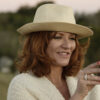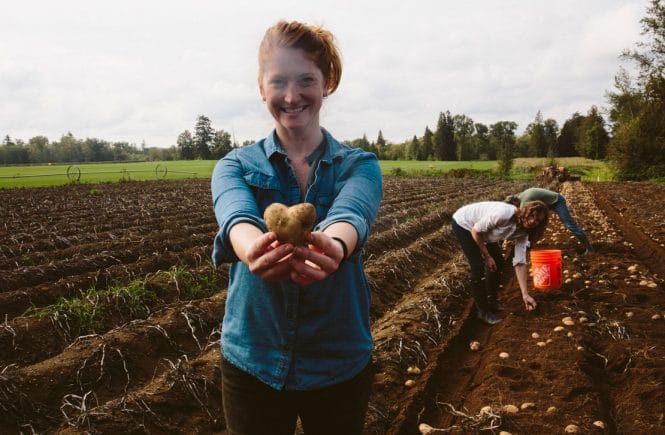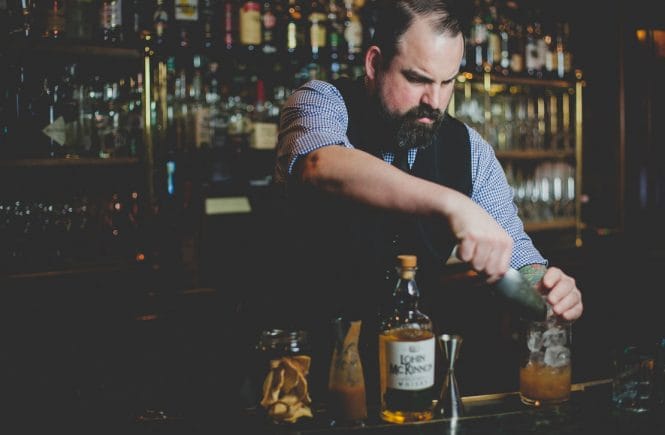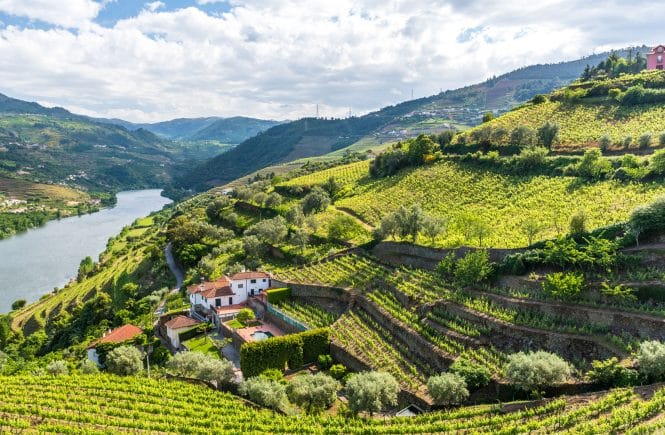Could B.C.’s new spirits inspire a truly West Coast cocktail culture?
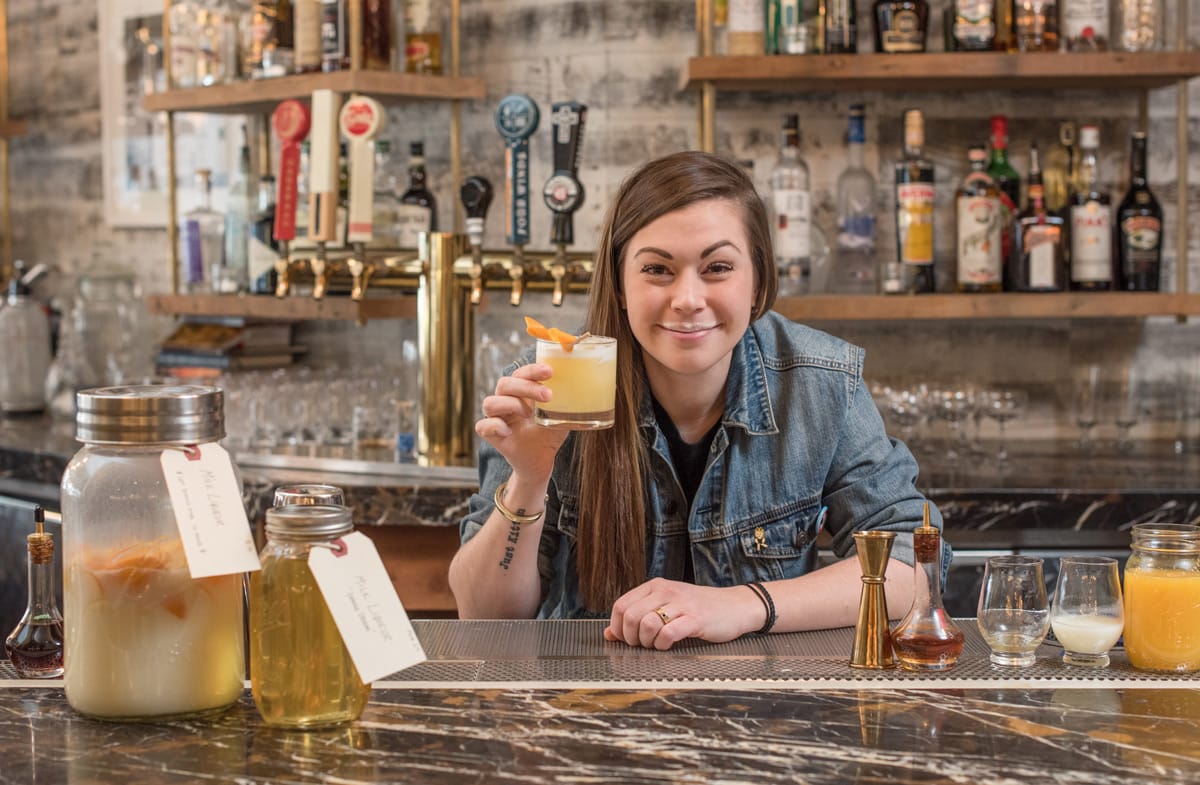
Kaitlyn Stewart slides a mason jar filled with a disturbingly yellow liquid across her bar at Royal Dinette in downtown Vancouver. I hope it’s not what it looks like.
“Milk liqueur,” she says, beaming proudly. “Double strained after sitting on the shelf for 10 days.”
Ooh, funky—and obviously crying out to be mixed with a commensurately funky local spirit.
The new world of British Columbia craft distilling has led us into uncharted taste territory. Partly because of provincial regulations that require small distillers to make their own neutral grain spirit, and partly due to inexperience, the local artisan hooch often exudes unusual creamy weightiness, odd grain aromas and distinctive banana, lavender and soapy flavours.
The new world of British Columbia craft distilling has led us into uncharted taste territory.
That doesn’t necessarily make these unique spirits bad—in fact, some are great. They’re just different. But they don’t always play well with classic cocktail profiles, and can be challenging to work with when designing new drinks; the bartenders who use them must be creative. The few that are taking that challenge head on are mapping a new field of West Coast-style libations.
For her milk liqueur, Stewart gravitates to Odd Society Spirits’ East Van Vodka. “It’s a little earthy and harsh on the rye side, which can throw people off,” she says. “When I first tasted it, blind, I didn’t even think it was vodka. I thought it might be a gin infusion or a small-batch white whiskey.”
The milk liqueur (pleasantly creamsicle-like on its own) takes advantage of the vodka’s non-neutrality, lending it extra sweetness and viscosity. Stewart adds a touch of arancino and a splash of ginger-honey mead to tease out the vodka’s rye sweetness, and serves her newly invented Milky-Whey on the rocks to bind the flavours. Soft, citrusy and slightly bitter on the finish, the drink is totally delicious and utterly unique.
“I love working with all these new spirits,” says Stewart, who often collaborates with Royal Dinette’s chef, Jack Chen, on ugly duckling oddities such as pea-shell-juice Martinis. “It gives me something different to play with every day.”
It seems strange that there aren’t more Vancouver bartenders getting behind B.C. craft spirits. This is a city, after all, where eating locally is practically a religion, craft beer is the fastest-growing segment of the homegrown beverage industry, and B.C. wines have dominated liquor store sales for more than a decade.
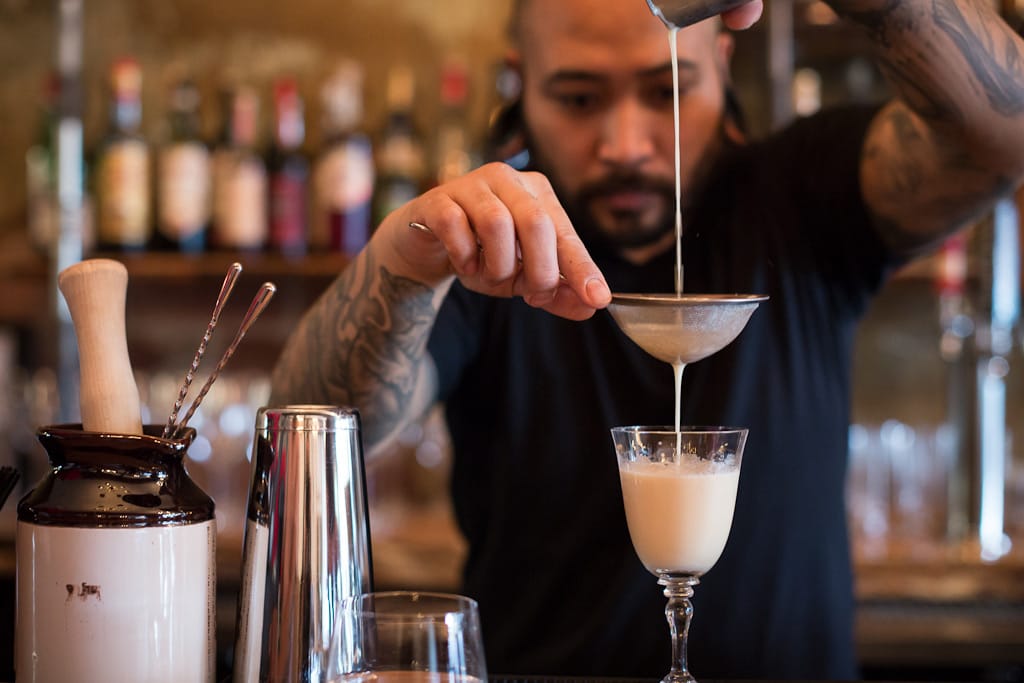
“You want to support local,” says Jay Jones, beverage director of Vij’s Restaurant Group, which boasts its own grape gin—Bolly Water—made at Okanagan Crush Pad. “These are friends and colleagues. But when it comes to choosing what bottles you’re placing on your back bar, the cost has to be right, and it has to stand up to international competition. You’re not going to shoehorn in something that is awkward just to support it. It has to fight for its place on the shelf.”
I get it. B.C. spirits are expensive, distribution is unpredictable and the quality can be inconsistent. The bartenders who do put the time and effort into making local spirits work might not be reaping the sponsorships and discounts that large international conglomerates can provide, but they are the intrepid explorers making new discoveries.
“It’s almost like Jekyll and Hyde,” says Arthur Wynne, head bartender at The Mackenzie Room, as we marvel over the unexpected versatility of Fermentorium Distilling Co.’s Stump Coastal Forest Gin. “Being a unique spirit, you can give it different personalities.”
For his West Coast Fizz, Wynne has been playing with a variety of craft beers. When mixed with Four Winds IPA, the gin’s Cascade hops come to the forefront, pulling out a roasted walnut flavour. With Twin Sails Pilsner, the gin’s lighter fir, citrus and bay laurel notes are accentuated.
“It’s different, but it’s supposed to be,” Wynne says. “This isn’t Beefeater or Tanqueray. This is New World gin.”
—by Alexandra Gill

